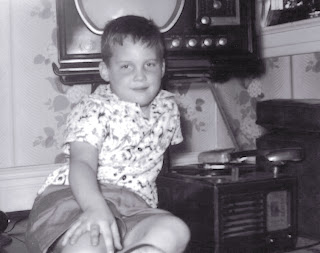 Recently I was in the audience for a Camerado concert in Brooklyn while sitting at home in my living room, thanks to a live webcast; and I was more engaged than when viewing a live network awards concert.
Recently I was in the audience for a Camerado concert in Brooklyn while sitting at home in my living room, thanks to a live webcast; and I was more engaged than when viewing a live network awards concert.It's so easy to be seduced by the power and possibilities of expensive mics, preamps and digital 5.1 surround sound. At first, experiencing the webcast's low fidelity audio and video made me think of a tenth generation analog dub of a recording, which was contrary to the exciting factor that it was live. But it's the musical performance, and my enjoyment of it, that transcends the quality of transmission. It's like the early days of AM radio when folks in the hinterlands tuned in far away urban soundscapes and listened through the static to bands playing live in New York City hotel ballrooms. While hi-def may be able to put bad music on life support, lo-fi can't kill good music.





